

 |

The
Tannery appears on the Inclosure map of 1814 as
occupied by Samuel Hall, who had been there at least
since 1802 when he is recorded in the Norfolk Poll.
The house is shown in pink and the tannery buildings
in grey.
[Courtesy
of Norfolk Record Office C/Sca/2/243]

Norwich Union Insurance Company employees visiting
Worthing tannery in September 1894. It is quite likely
that the man standing at the right is the then owner,
James Phillippo, who bought the business in 1890. We
know from the
following article that the foreman was John Neale, so that
may be him at the left. He is wearing gaiters
over his boots to keep his feet dry.
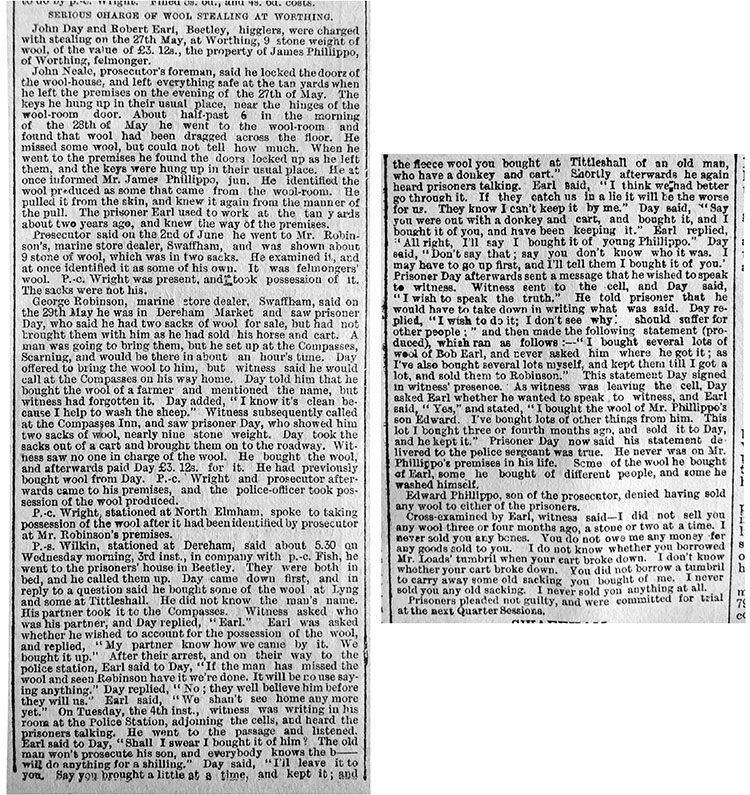
June 1891 -
theft of wool from the tannery. An attempt was
made to implicate Edward Phillippo, the owner's son, in the
crime. "Shall I say I bought it
of him? The old man won't prosecute
his son, and everybody knows the b———
will do anything for a
shilling."
Typhoid in Worthing
James
Phillippo was prosecuted in March 1900 for polluting
the river
and wells in Worthing. The court
report in the local newspaper
describes in detail what must have been a
particularly unpleasant job and its
effects.

Typhoid had
been caused by the pollution.

Phillippo's lawyer, E. E. Wild, tries undermining
the Medical Officer's evidence.

A familiar argument …

Phillippo's
neighbour at the mill, Mrs Merrison, was the principal complainant.
Wild
suggests that the pollution is caused by
her negligence in allowing weeds to
accumulate, then that she bears
a grudge against Phillippo.

The Bench is not
persuaded by Wild's argument …

The
case concluded with a ruling that the boiling
house be moved. There was evidently some
improvement as there are no further reports
in the paper.


In
February 1904 the tan yard was under water.
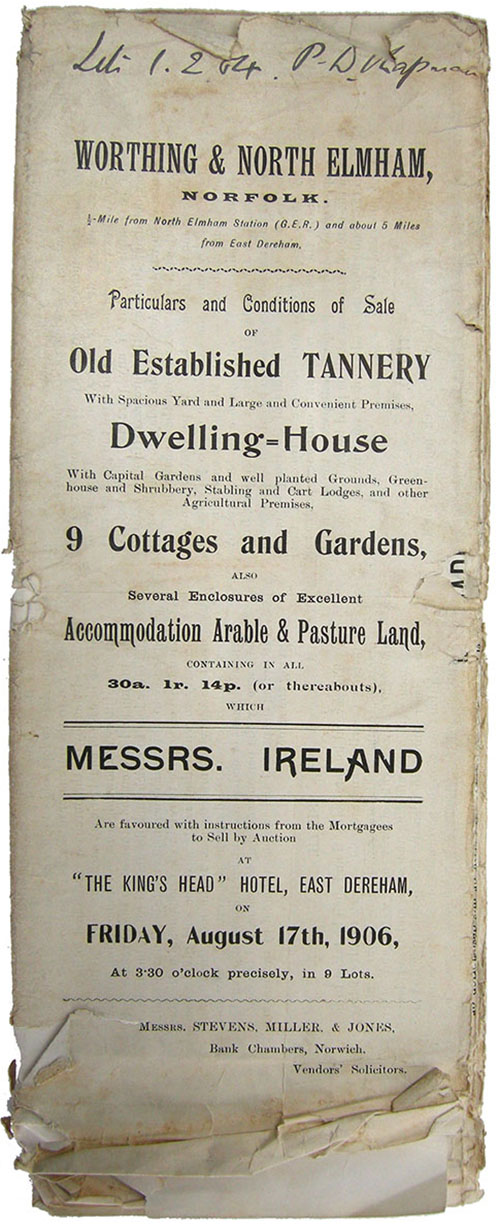
In 1906
the Tannery, which was
mortgaged,
was sold. It was bought for £1065 by Philip
Chapman who had a tannery and farm at Fakenham.

The 1906 sale catalogue lists the tannery equipment.
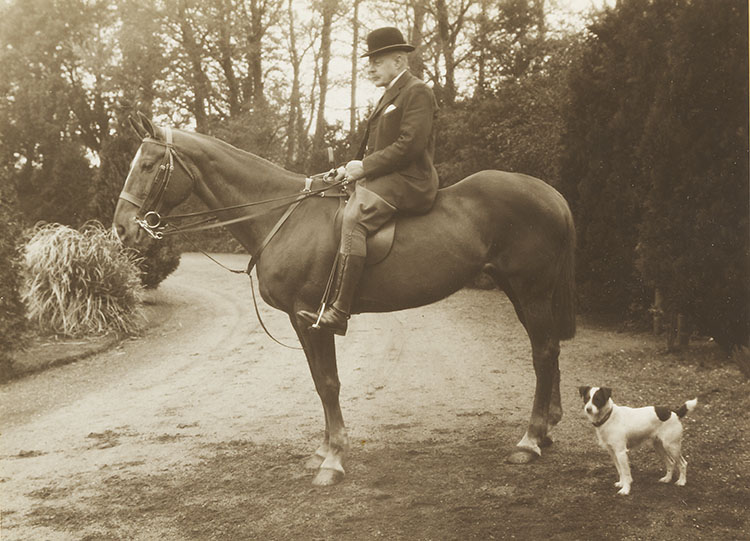
Philip Dennis Chapman (1866-1934), farmer, tanner,
fellmonger and wool merchant.

Kelly's Cambridgeshire Norfolk & Suffolk Directory
1933.
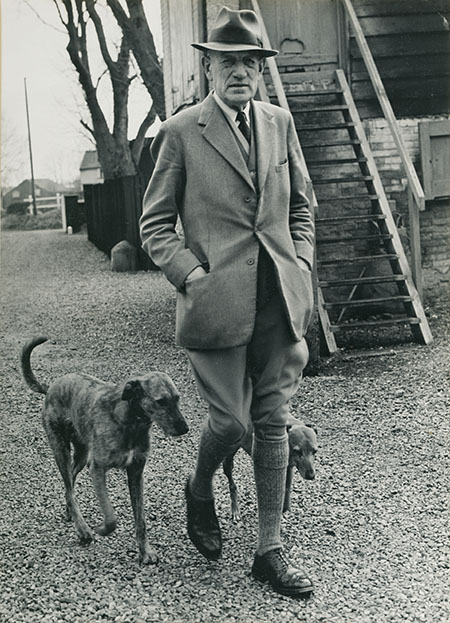 Edmund (Ted) Crowe Chapman (1894-1971)
Edmund (Ted) Crowe Chapman (1894-1971)
succeeded his father running the
business and
lived at the Tannery House in
Worthing.
He was an enthusiastic horseman,
huntsman
and horse breeder and Clerk of the
Course at
Fakenham for twenty years.
 Tannery worker John
Neal and Ted Chapman's Tannery worker John
Neal and Ted Chapman's
daughter Alice in the Tannery yard.
Alice Chapman married Peter Gow.

Peter Gow became a director of the business in
the early 1930s, when this photograph was taken. Peter
Gow and Ted Chapman are in the centre of the middle
row, and around them are employees and their spouses,
many of them Worthing residents.
In 2009, North Elmham resident Norman Lowe wrote the
following account of work at the Tannery.



Peter Gow took these photographs in the 1930s. Here
unsorted fleece is arriving for grading. In the
foreground is the weighbridge.

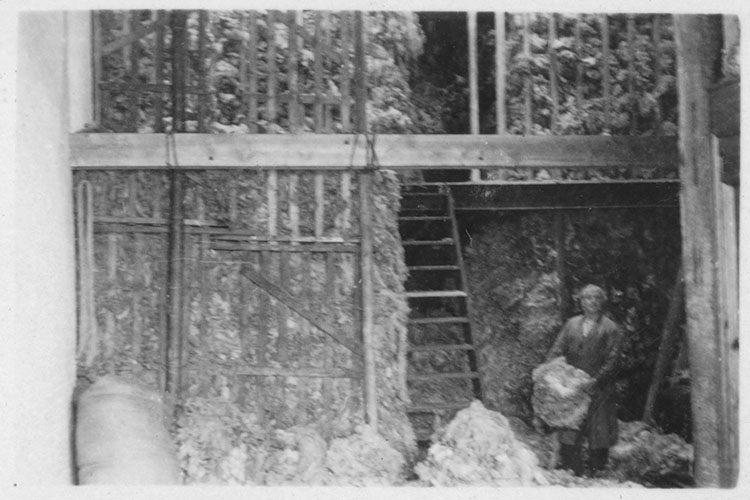
Wool being sorted.
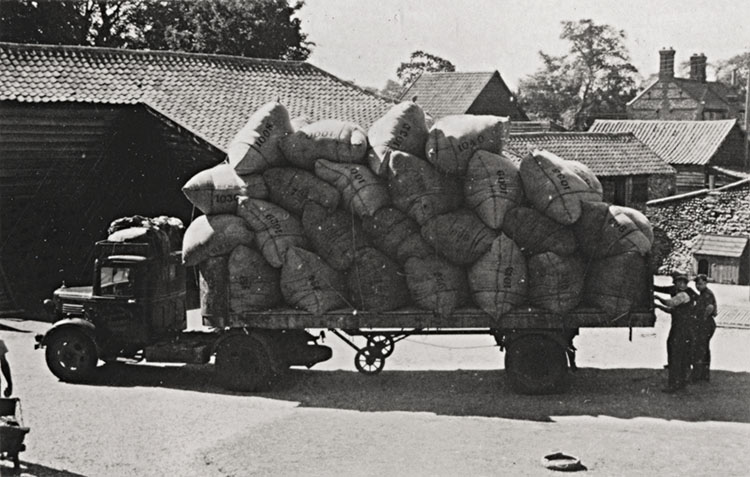
Once sorted, the wool was sent to be spun.
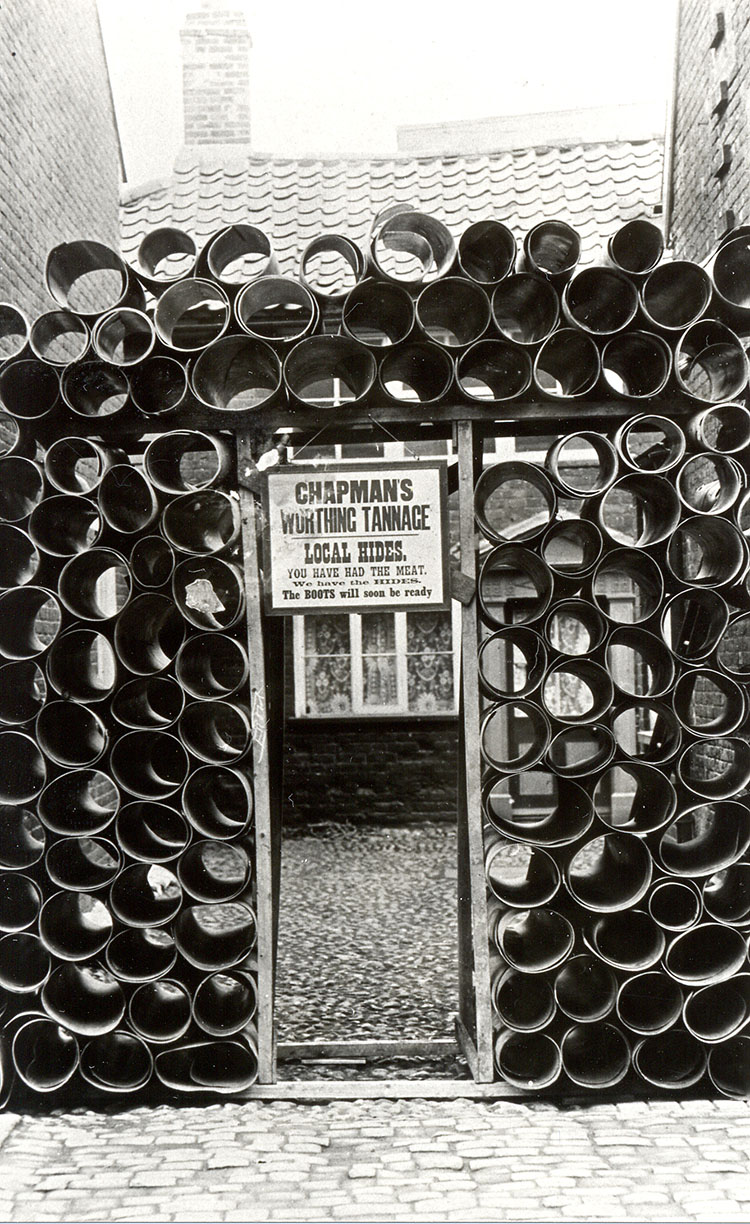
Chapmans also had premises on Norwich Street in
Dereham. This photo from the 1920s shows a display of
rolled hides of the sort of thick leather used for
bootmaking. The sign reads
Chapman's
Worthing Tannage
Local Hides
You have had the meat
We have the hides
The boots will soon be ready
With thanks to Gordon Olley and Robena
Brown for use of this photograph.
The tannery closed in the 1940s according to Norman
Lowe.
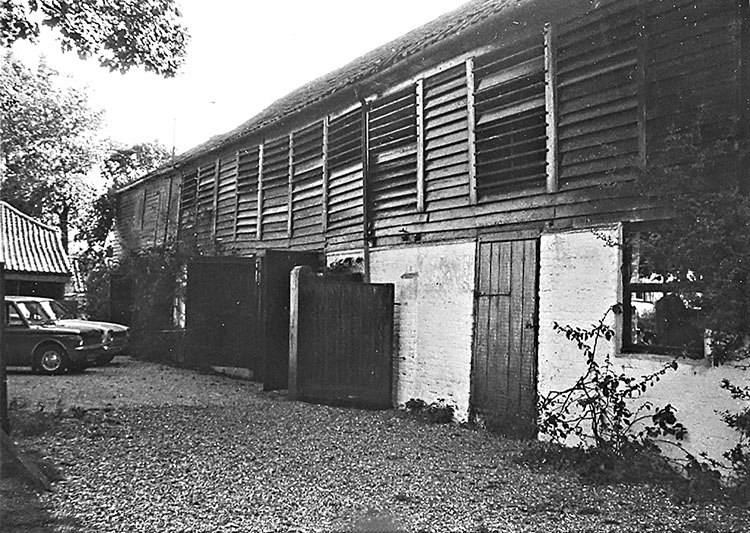
In 1979, the tannery was surveyed by the Norfolk
Industrial Archaeology Society. This shows the wool
shed from the south side, since converted to
Millstream Cottages.
 This plan, based on the 1979 survey and
This plan, based on the 1979 survey and
information from Norman Lowe, shows
the
various parts of the tannery.
The tan pits and buildings as they appear on
the
Ordnance Survey 25" map of 1883.

Reproduced
with the permission of the National Library of Scotland
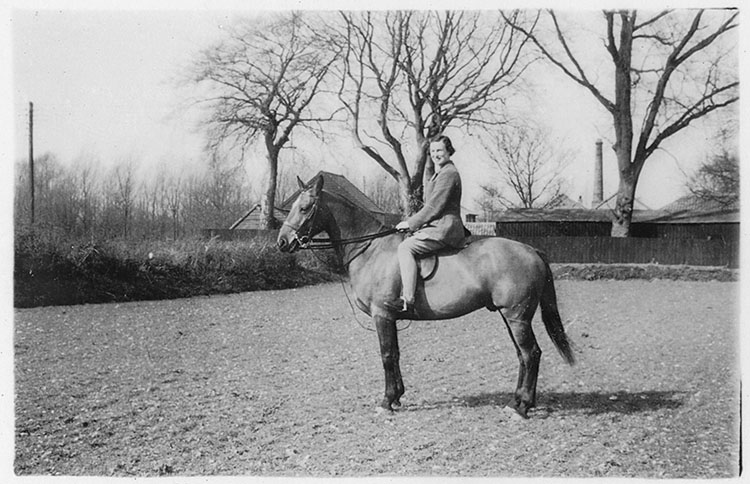
This photo from the 1930s shows, in the background, the
boiler-house chimney. The rider is thought to be Malise
Bullard.
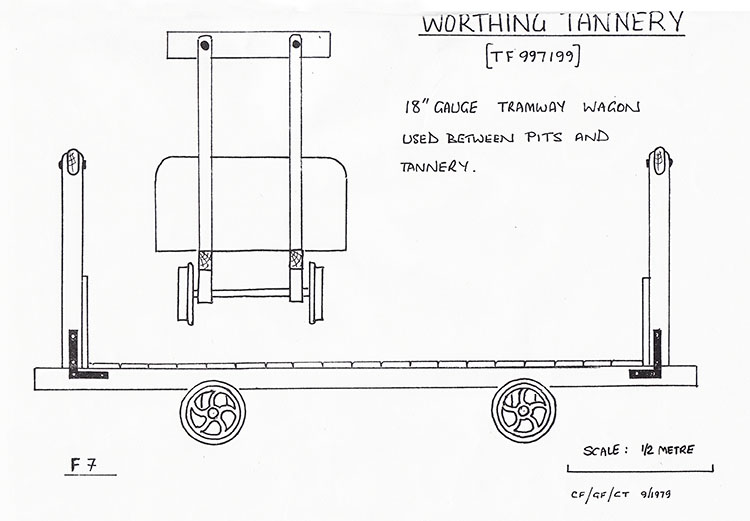
The Norfolk Industrial Archaeology Society survey
includes this drawing of a tramway wagon. Norman Lowe
describes how it was used across the overhead tramway
between the sheds.
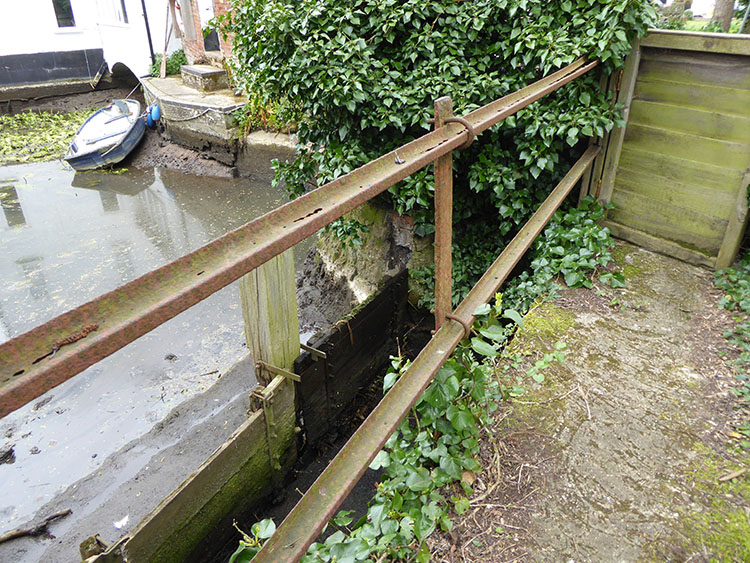
One of the footbridges by the Mill has handrails made
of the tramway rails.
|
|